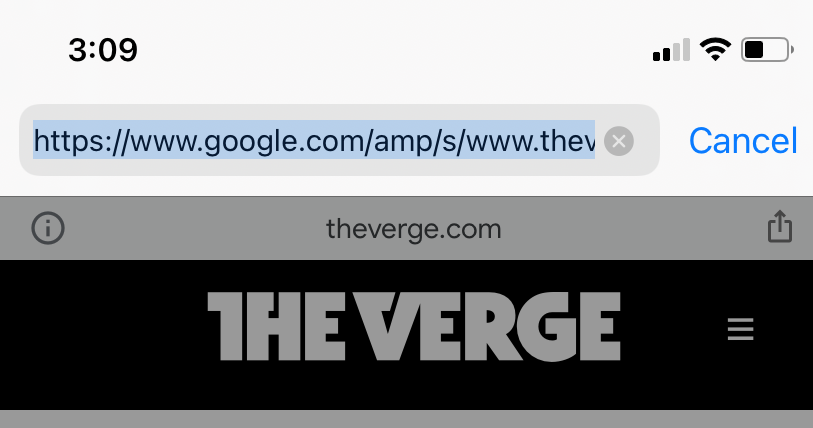Mobile App Development, SEO, Social Media, Web Development
What is Google AMP? | Seer Interactive
- By Brett Belau
06 Feb

Originally introduced to the digital marketing world in 2016, Google AMP has seen a lot of changes over the years. Whether you love it or hate it, you should probably know a thing or two about AMP if you’re in the search marketing space.
What is Google AMP?
Google AMP (which stands for Accelerated Mobile Pages) is an HTML framework that allows publishers to create quick-loading copies of web pages for mobile.
It was the result of a general user shift towards mobile when it comes to navigating the internet. Currently, AMP can be used for websites, ads, emails, and even web stories, which aim to replicate the success of Instagram and Facebook Stories.
What is the Google AMP Viewer?
The Google AMP Viewer is one of the ways your site content can be displayed to users. In this case, your URL will be shown as a Google domain, but your own website domain will also be displayed at the top of the Viewer. This is the default setting for Google AMP pages.
The other way your site content can be displayed is through signed exchange. Signed exchange allows the browser to serve your web page as if it belongs to your domain. This means that it will display your domain in the URL field instead of a Google domain.
How to Use Google AMP
The purpose of Google AMP is to improve user experience, so you can bet it comes with some SEO implications. Here are some tips on how to successfully use Google AMP from an SEO perspective:
- Make sure your AMP pages are properly implemented. Find out more information on AMP implementation here.
- Make sure your AMP pages are indexable and crawlable. Google requires AMP pages to always link to a canonical page. The canonical can be either a non-AMP version of the page or it can be the AMP page itself.
- Create AMP pages with a responsive design, since they are not strictly for mobile devices.
- Use the AMP Test Tool to check whether your AMP page is valid.
- Keep the UI consistent across the AMP and non-AMP version of the page.
- Keep the structured data markup consistent across the AMP and non-AMP version of the page.
- Adhere to AMP logo guidelines.
- Keep AMP URLs out of your XML sitemap.
Do I Need AMP?
The short answer is no – AMP is never a must-have for mobile content, and the outcomes aren’t always worth the effort of implementing AMP on your site.
Following the June 2021 Google Page Experience Update, AMP is no longer essential for content to rank in the Top Stories SERP feature or Google News. Google also removed the AMP badge icon that indicated AMP content directly in the SERPs. Google will now give ranking incentive to pages that load fast instead of AMP pages. This eliminates a lot of the pressure web publishers previously felt to implement AMP if they wanted a shot at ranking on mobile.
💡 Learn more about the Google Page Experience Update from Seer.
Benefits of AMP
Even though AMP is not a requirement to rank on Google, there are still benefits of using AMP that might make it worth your efforts. Here are a few examples:
- Faster page loading times
- Increased site engagement
- Lower bounce rates
Drawbacks of AMP
In some cases, implementing Google AMP just isn’t worth it. Here’s why you should use caution when determining if AMP is the right choice for your site:
- Can be tricky to properly implement
- Inhibits UX capabilities
- Costs double the crawl so Google can ensure parity
- Google AMP Viewer displays URLs as a Google domain
Future of AMP
As Google and its algorithms evolve with time, it’s hard to say what the future of AMP will look like. It’s likely that this framework will remain a viable option for webmasters within the foreseeable future.
What we know for sure is that optimizing your site based on Google’s ranking factors is always going to be essential – whether you achieve that with or without AMP.
Sign up for our newsletter for more posts like this in your inbox:
Source: www.seerinteractive.com, originally published on 2022-02-03 12:13:13
Connect with B2 Web Studios
Get B2 news, tips and the latest trends on web, mobile and digital marketing
- Appleton/Green Bay (HQ): (920) 358-0305
- Las Vegas, NV (Satellite): (702) 659-7809
- Email Us: [email protected]

© Copyright 2002 – 2022 B2 Web Studios, a division of B2 Computing LLC. All rights reserved. All logos trademarks of their respective owners. Privacy Policy

![How to Successfully Use Social Media: A Small Business Guide for Beginners [Infographic]](https://b2webstudios.com/storage/2023/02/How-to-Successfully-Use-Social-Media-A-Small-Business-Guide-85x70.jpg)



![How to Successfully Use Social Media: A Small Business Guide for Beginners [Infographic]](https://b2webstudios.com/storage/2023/02/How-to-Successfully-Use-Social-Media-A-Small-Business-Guide-300x169.jpg)


Recent Comments